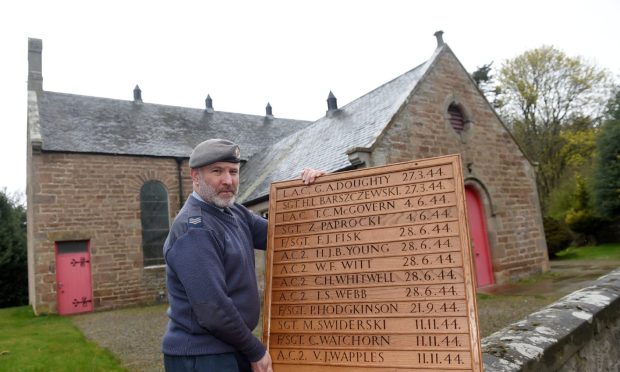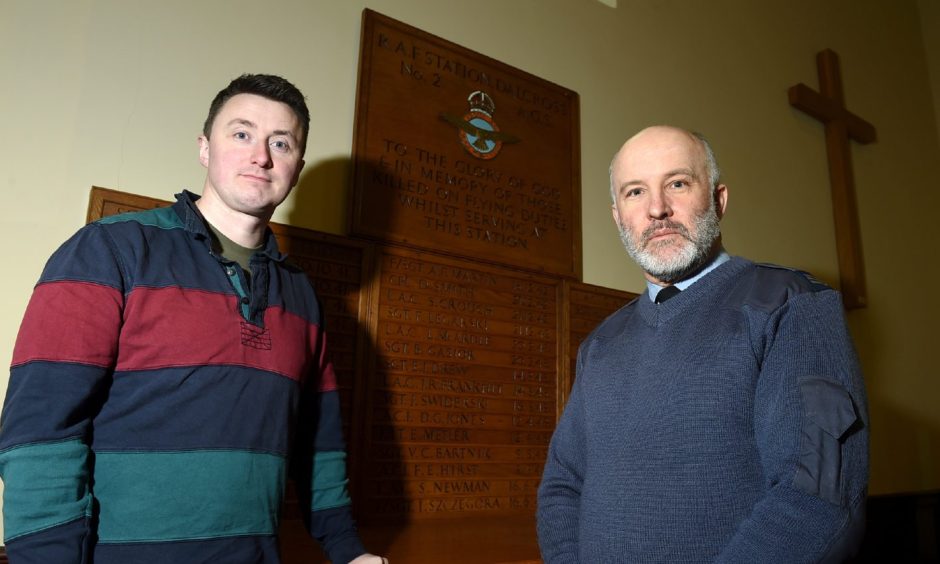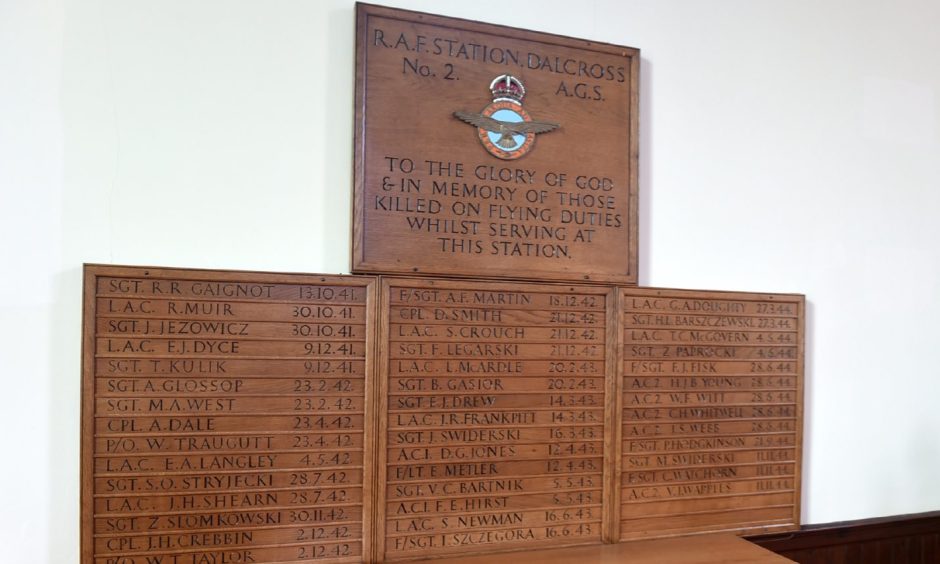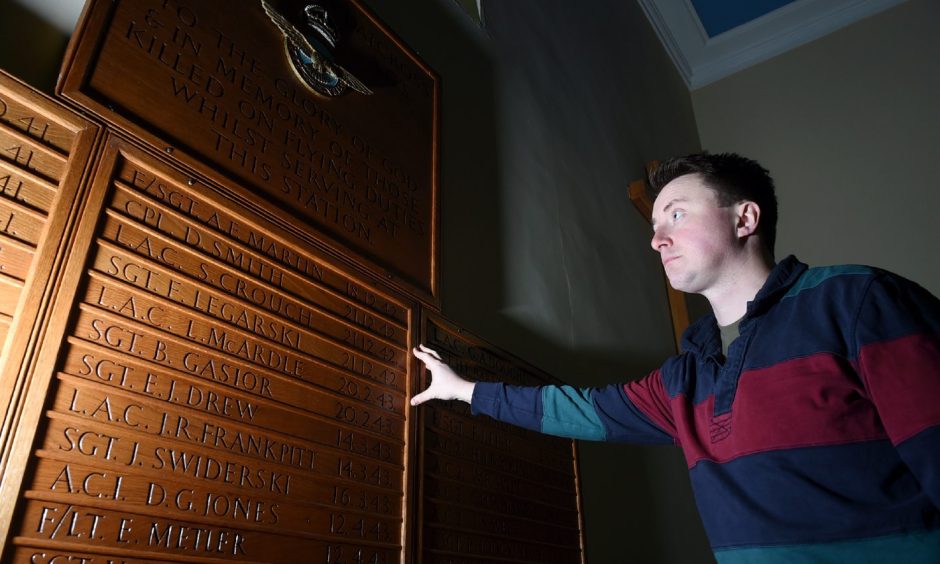Eric Langley was one of two airmen who set off on a wartime training mission from Inverness, but only his name later appeared on the wall of a nearby church.
A Boulton Paul Defiant aircraft carrying Leading Aircraftsman Langley and a Sgt Finney suffered engine failure over Chanonry Point and ditched into the Moray Firth.
Sgt Finney was rescued, with the help of another aircraft piloted by a Sgt Shepherd, who had spotted the crash.
LAC Langley, from Lincolnshire and who was just 20, wasn’t so fortunate and was lost when his life jacket did not inflate.
The men were part of the No 2 Aircraft Gunnery School at RAF Dalcross when the accident happened on May 4, 1942.
Airmen at Dalcross base remembered
LAC Langley’s name was added to memorial boards which once adorned the wall of the Second World War training base opened in 1940.
Among the other names were the victims of an accident that caused the single biggest loss of life at the base.
On June 28, 1944, an Avro Anson aircraft struck a cable being towed by a Martinet and crashed near Nairn railway station.
Flt Sgt Frederick Fisk, 29, from Hounslow, and four Aircraftsmen 2nd class – Herbert Young, 19, from Ilfracombe; Walter Witt, 23, from Dunstable; Charles Whitwell, 19, from Exeter; and John Webb, from London, (age not recorded) were all killed.
RAF Dalcross became a commercial airport in 1947 and many years later the memorial boards were discovered in an old shed.
They were then moved for safe keeping to nearby Petty Church where they were placed on a wall behind the pulpit.
Now, with the building being renovated, it was felt the boards and the men they commemorate should again come under the protective wing of the RAF.
Names on memorial board include Polish pilots
The boards contain 43 names, including those of Polish airmen as RAF Dalcross also trained Polish pilots to communicate in English.
A plaque above the names reads ‘To the Glory of God and in memory of those killed on flying duties whilst serving at this station’.
The former Church of Scotland building at Petty, erected in 1849, closed last year with the congregation uniting with those at Barn Church in Culloden and Ardersier.
It is now Tornagrain Community Church, led by Rev Innes Macsween, as an offshoot of Smithton Free Church and owned by the Free Church of Scotland.
The church is already becoming established as part of the growing new town.
Mr Macsween said: “While they have been part of the recent history of Petty, we felt it would be most appropriate if these boards should find a permanent home at an RAF base.
“We decided that would be the best place where their connection to history would be far more appropriately commemorated, celebrated and contextualised.
“It will also be helpful if families want to find ancestors, including the Polish airmen.”
The memorial has been handed over to Sgt John Le Huquet, a member of the heritage team at RAF Lossiemouth, where it will be given an appropriate home.
He was unaware it existed until contacted by the church and jumped at the chance to take it to Lossiemouth.
Fitting that the wartime memorial is going to Lossiemouth
“It was important to us that the boards were preserved.
“They are not just names, they are people and our forebears. It is important that their stories are told.”
He said some of the airmen at RAF Dalcross would have been posted to 20 Operational Training Unit at RAF Lossiemouth or 19 Operational Training Unit at RAF Kinloss to complete their wartime training.
“That is the path many would have followed if fate had not dictated otherwise.
“A lot of the pilots were Polish as there was a Polish community along the Moray Firth, including at Lossiemouth.
“So that’s another fitting reason.”
He said the new guardians aim to live up to a Polish saying: ‘Nobody truly dies while they remain in the memories of the living’.
“That is what we will be trying to ensure with these boards coming to Lossiemouth.”




Conversation